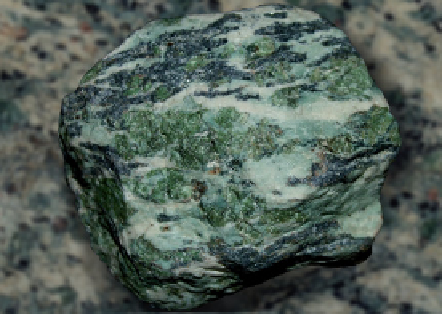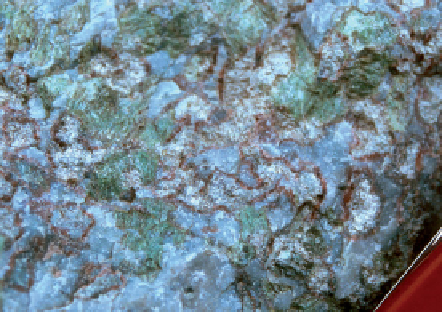Geoscience Reference
In-Depth Information
9
(
(
Figure 9.12
Evidence that the metamorphosed rocks in the Zermatt area were once oceanic crust.
(a) Deformed lozenges in a metabasalt, interpreted as pillows formed in a basalt erupted under water. The
mineral assemblage indicates that these rocks were metamorphosed to eclogite facies, at depths of around
90 km (lens cap for scale at base of exposure). (b) Igneous mineralogy (plagioclase and pyroxene)
metastably preserved in a metagabbro from the same area as the metabasalts in (a). The right-hand half of
the fi eld of view appears blurred because in this domain the original minerals have been partially altered
to eclogite facies minerals, including garnet (red). View is about 6 cm across. (a and b: Tom W. Argles,
The Open University, UK.)
(
(
Figure 9.13
Metamorphic textures from rocks in the Zermatt area. (a) Eclogite facies metagabbro, with
green crystals of omphacite (Na-pyroxene) and coronas of red garnet encircling talc-rich pseudomorphs
(after igneous olivine). Pale groundmass is altered plagioclase. View about 9 cm across. (b) Eclogite facies
metagabbro with a weak blueschist facies foliation defi ned by dark blue amphibole, which wraps around
pre-kinematic omphacite crystals (green). View is about 7 cm across. (a and b: Tom W. Argles, The Open
University, UK.)












